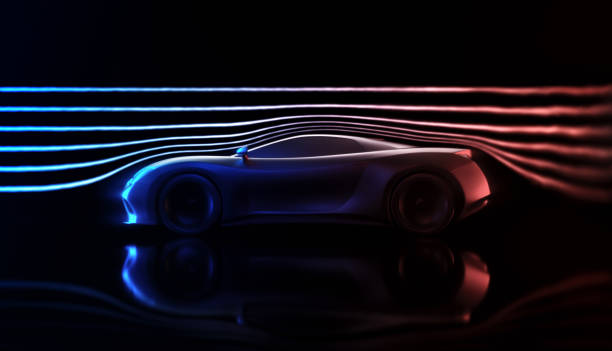The Art and Science of Vehicle Aerodynamics
As an automotive enthusiast, you've probably asked yourself: "How does the design of a car affect its speed, fuel efficiency, and overall performance?" Today, let's embark on a journey into the fascinating world of vehicle aerodynamics, where art meets science, and form meets function.

A Brief Journey Through Time: The Evolution of Vehicle Aerodynamics
Vehicle aerodynamics, in its simplest terms, is the study of how air interacts with moving vehicles. It’s a field that marries science and aesthetics, shaping the performance and looks of our cars. From the boxy designs of the early 20th century to today’s sleek, wind-slicing models, the impact of aerodynamics on car design and performance has been profound.
Aerodynamics first made its mark in the automotive world in the 1920s, when engineers began to realize that a car’s shape could significantly impact its speed and fuel efficiency. This realization led to the creation of streamlined designs, which reduced drag and improved efficiency. Over the years, advancements in technology and research have led to the development of increasingly aerodynamic cars, transforming the industry and the way we drive.
The Science Behind the Speed: Understanding Aerodynamic Principles
At the heart of vehicle aerodynamics lie two main principles: drag and lift. Drag is the resistance that a moving object faces when it moves through a fluid medium, in this case, air. There are two types of drag that affect vehicles: parasitic drag, which increases with the square of speed, and induced drag, which is caused by lift, the force that opposes gravity.
As speed increases, so does the air resistance, meaning that a car must work harder and consume more fuel to maintain its speed. This is where the concept of lift comes into play. In simple terms, lift is the force that opposes the weight of an object and helps it to move through a fluid medium. In the case of cars, reducing lift can help to improve stability and handling at high speeds.
The Impact of Aerodynamics on Fuel Efficiency and Performance
Aerodynamics doesn’t just enhance a vehicle’s speed capabilities; it also plays a crucial role in fuel efficiency. A car with a low drag coefficient - a measure of its aerodynamic efficiency - will require less power and, consequently, less fuel to move at a certain speed compared to a car with a high drag coefficient.
In addition to fuel efficiency, aerodynamics also impacts vehicle stability. Improved aerodynamics can reduce lift, which in turn reduces the risk of a car becoming unstable at high speeds. This, combined with other factors like suspension and tire grip, can significantly enhance a car’s handling capabilities.
Challenges and Future Directions in Vehicle Aerodynamics
Despite the significant strides made in vehicle aerodynamics, several challenges remain. One of these is the trade-off between aerodynamic efficiency and design aesthetics. In many cases, making a car more aerodynamic means compromising on its visual appeal, a factor that is crucial in the highly competitive automotive market.
Looking to the future, the field of vehicle aerodynamics promises exciting developments. With the rise of electric and autonomous vehicles, aerodynamics will play an even more crucial role in maximizing range and ensuring stability. And as technology continues to advance, we can look forward to a new era of vehicles that are not only more efficient and faster but also more beautiful than ever before.
In conclusion, vehicle aerodynamics is a fascinating field that blends art and science, shaping both the performance and aesthetics of our cars. As we move forward, it will continue to play a crucial role in the automotive industry, pushing the boundaries of speed, efficiency, and design. So, the next time you admire the sleek lines of a sports car or marvel at the fuel efficiency of a modern sedan, remember the important role that aerodynamics plays in making these feats of engineering possible.





